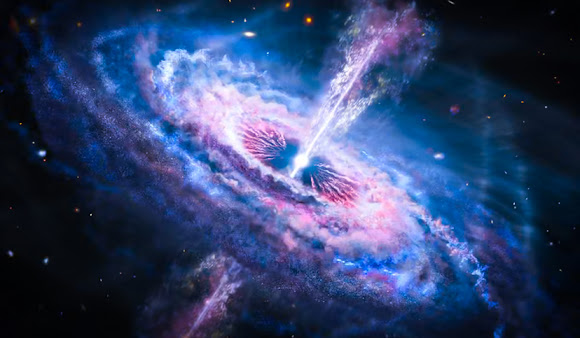Astronomers have long theorized that the fabric of spacetime behaves differently at cosmological distances due to the effects of general relativity and the universe’s expansion. One of the most compelling predictions of Einstein’s theory is time dilation, the phenomenon where time appears to pass more slowly for objects moving at high velocities or situated in strong gravitational fields. Recently, astronomers have successfully observed this effect in the early universe by analyzing the light from distant quasars, providing direct evidence that time flowed differently billions of years ago.
Understanding Time Dilation
Time dilation is a consequence of both special and general relativity. In the special theory of relativity, time slows down for objects moving close to the speed of light. In general relativity, time is also affected by gravity—clocks in stronger gravitational fields tick more slowly than those in weaker fields. However, cosmological time dilation arises due to the expansion of the universe. As space itself stretches, the passage of time for objects in the distant universe appears to slow down when observed from Earth.
Astronomers have previously confirmed time dilation in supernovae—stellar explosions that serve as cosmic clocks. When examining supernovae billions of light-years away, their light curves, which describe how their brightness changes over time, appear stretched, consistent with the predicted effects of time dilation. Now, a new breakthrough has enabled scientists to measure this effect using quasars, some of the brightest and most distant objects in the universe.
Quasars as Cosmic Clocks
Quasars are active galactic nuclei powered by supermassive black holes that emit immense amounts of energy. Their light fluctuates over time due to changes in their accretion disks, the swirling rings of gas falling into the black hole. These fluctuations make quasars ideal cosmic timekeepers, allowing scientists to compare time measurements across vast cosmic distances.
In a recent study, astronomers analyzed the light from quasars that existed when the universe was only about one billion years old—less than 10% of its current age. The researchers examined the variations in quasar brightness and compared them to closer quasars. The results were striking: the more distant quasars exhibited stretched timescales, consistent with the expected effects of time dilation. Light variations appeared to slow down by a factor that matched the universe’s expansion rate predicted by cosmological models.
Implications for Cosmology
The observation of time dilation in quasars provides further confirmation of the standard model of cosmology, which describes an expanding universe governed by dark energy and dark matter. It also reinforces the reliability of Einstein’s general relativity over vast timescales. Moreover, these findings help refine our understanding of the early universe by providing more accurate measurements of cosmic expansion.
This discovery opens new doors for using quasars as tools for probing fundamental physics. By studying the relationship between quasar variability and redshift (the stretching of light due to cosmic expansion), astronomers can gain deeper insights into the history and fate of the universe. Future telescopes, such as the James Webb Space Telescope (JWST) and the Vera C. Rubin Observatory, will further refine these measurements, enhancing our ability to explore time dilation across different epochs of cosmic history.
Ultimately, the detection of time dilation in quasars is a profound demonstration of how the universe’s fundamental laws shape our perception of time, proving once again that the cosmos behaves in ways Einstein predicted over a century ago.

Comments
Post a Comment